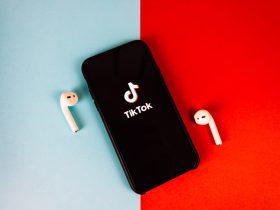Here are some social commerce examples that are applying unique social media strategies for expanding their customer base
About social commerce
Social commerce is the latest trend in ecommerce which involves buying and selling of products through the social media. It allows businesses to establish superior engagement with customers on social media.
Advantages of social media
As social media has become highly popular, it has provided global reach to businesses and allows them to precisely target customers and involves low costs. The results of digital campaigns can be measured almost instantaneously and required changes can be applied to the campaigns to make them successful.
The future of ecommerce definitely lies in social commerce as social media offers the perfect meeting place for business and customers.
Social media as a viable platform
As people expect more personalised experience out of their interaction with brands, businesses are delivering it via the social media. For businesses, the social media is a great way to generate profits for a brand and involves much less costs compared with the traditional marketing campaigns, making it a viable option for them to promote their products and services through the channel.
Some of the businesses using social media for business include:
1. Au Revoir Cinderella:
The role of user-generated content cannot be overstated as it plays a vital role in the sales figures of a business. New users are influenced by user-generated content in a big way as 93% of shoppers think content generated by users are helpful in selecting the product they want to buy.
Au Revoir Cinderella is one of them, which uses this concept for its business. It applies content generated by users to display its products as pictures that has proved to be a better way of marketing products than the conventional branded posts. Another advantage of this marketing strategy is that people feel more connected with the brand and prefer it over other brands for their shopping requirements.
2. Burberry:
Videos have proved to be the key for social shopping websites. Websites which include videos for promoting their products are more popular among users compared with those which don’t. As people are using social commerce more than ever, they are preferring videos about products before buying a product. According to studies, people are spending almost double the time on pages that include videos compared with those which don’t.
That is why, Burberry uses live videos to promote its products. The use of visuals catches the attention of users instantly and establishes a strong connect with the audiences since users have an in-depth look at the products. Videos can be used in different ways, such as, vines, vlogs, and advertisements for promoting products and services.
3. Dollar Shave Club:
Social proof is a fundamental need towards the success of a business. It helps build trust for the brand and works as a motivation for others. Positive feedback from existing users establishes a strong base for a company to build upon its business as reputation is the key for a business if it aims to be a brand.
The idea of social proof is behind Dollar Shave Club which uses it as a marketing tool. They created a Pinterest board dedicated to user reviews and unboxing pictures and videos. The use of social proof and user-generated content has proved to be the USP for the brand.
4. Ipsy:
Ipsy is an example of using social media for spreading the word by using the popular “tell a friend” strategy as it uses social media to influence and incentivise its customers. They let their users have a sneak peek at the contents of their glam bag even before they’ve been launched by sharing a Facebook link. This strategy not only spreads brand awareness but provides users with a special experience as well.
5. Meller Brand:
Using social ads which don’t really look like ads is an easy way to influence viewers and attract new customers. This idea has been implemented by Meller Brand whose ads are highly influential and draw new customers. As the ecommerce conversion rate for fashion and beauty is higher in comparison with other categories, it is using ads to drive sales.
6. Modcloth:
Deals and discounts offered by brands on social media are a major attraction for people as around 42% of people follow brands on social media for coupons and discounts. Modcloth has taken advantage of this trend on social media and offers flash sales, great deals and discounts.
7. Realbuzz:
Brands may raise the level of user engagement through competitions and contests. People spend more time on a brand than on other brands in order to win contests which encourages people to engage with the brand willingly, increasing the potential customer base for a brand. This is the strategy used by Realbuzz which organises contests and competitions to attract customers. The contests may be designed towards different marketing objectives.
8. Spring:
Most brands are using AI-assisted Chatbots to resolve basic customer queries. These chatbots also provide personalized offers and recommendations. These are set to play a bigger role in social media ecommerce in the future. Spring is one of the brands, which uses AI bots for helping customers with their queries.










Leave a Reply